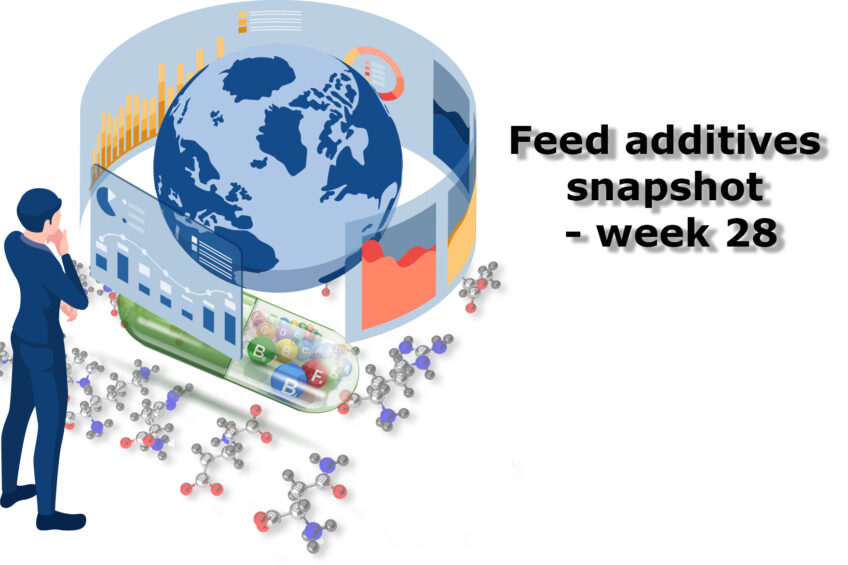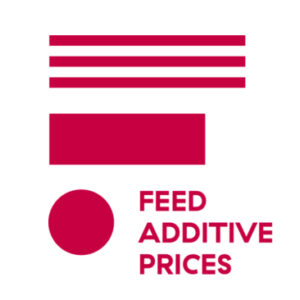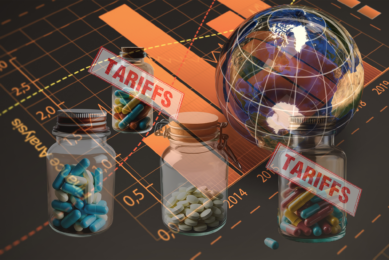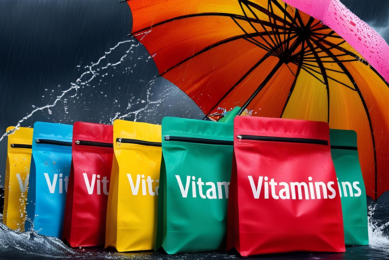Lysine market – some activity; Vitamin market- yet to react to restructuring news

Lysine hcl manufacturers continue to try to increase their prices, with some success. Some buying for Q4 is seen, but there is also a wait and see attitude until after the summer holidays. Learn more in this week’s feed additives snapshot (week 28).
The threonine market has gone very quiet. Some first price decline is seen for fresh offers, but new business has really slowed down. More capacity in the market is expected soon. Methionine, tryptophan and valine are currently pretty stable.
The recent communication by a major European vitamin manufacturer about their optimising and cost reduction project, has received a lot of attention in the market but no effect can be seen on prices and/or forward contract cover. In fact it has been very quiet for vitamin A and E. Vitamin B3 remains firm ex China, although other regions are quieter. Vitamin B2 is offered at even higher prices again, but the market has become quiet and calm now and it seems momentum is dying. B6 has been a bit firmer recently. Vitamin C has weakened further. Apart from that, the vitamin market is mostly quiet.
In partnership with Feed Additive Prices
Lysine
Chinese manufacturers continue to try to increase prices, with some success, although by just a few cents/kg. Output has been reduced recently and the consumption for lysine hcl is not too bad as several end users have switched from lysin liquid and lysin sulphate to hcl. By now, most of Q3 and a decent portion of Q4 are contracted. The summer is still long though and mostly quiet in some key regions, so it has to be seen what the price will eventually do.
Threonine
The market remains very quiet, after a relatively active period in May and June. Some fresh offers are now seen, although limited, at a discount compared to previous weeks. If that is a structural trend, is too early to say. Buyers that need to contract a portion of Q4 still, have a wait-and-see attitude and may be back on the market after the summer period. Q3 is contracted and a small portion of Q4 as well.
DL-Methionine
At least in Europe, spot prices are showing some decline compared to previous weeks. The market is very quiet and mostly contracted for Q3. Suppliers have been offering material in some cases for Q4, but buyers are not really tempted to do anything yet as there seems to be a good availability and more capacity is expected to come on the market at a similar relatively weak demand pattern. So, mostly stable prices, a bit weaker at least in EU, and no significant activity is seen at the moment.
Tryptophan
After a period of price increase in China, some price stabilisation is now seen there. Other regions, like the US and EU, show a stable price and a calm market for some time now. Prices in Europe did go up slightly this week, but nothing significant. Q3 is well contracted and as prices are relatively low, buyers look a bit on some Q4 cover, but no real action has been seen there yet.
Valine
The market is relatively quiet and prices are stable at the moment. A slightly increased consumption is expected in several regions, in Q4 2023. New capacity from traditional suppliers has been introduced step by step, not disturbing the balance too much. More new capacity will follow. Q3 is largely contracted, and in some cases, some Q4 cover has been taken as well.
Vitamin E 50%
In line with Vitamin A, a strong message was communicated recently by a main European vitamin manufacturer also for vitamin E. They also do not see any change on the demand side of the market in the short term for vitamin E and this product is also included in their optimisation and cost reduction project. So far, the market has not reacted and prices have remained unchanged. The market feels very calm and prices remain stable to weakish. Q3 is well contracted and a portion of Q4 is as well.
Vitamin A 1000
A static market with no changes seen compared to previous weeks. One of the main vitamin A manufacturers in Europe has given a clear statement recently. They do not see any change on the demand side of the market in the short term and have decided to optimise the production side and cut costs and have a more commodity-type of approach toward vitamin A. So far, the market has not reacted and prices have remained unchanged. That is mostly because longer-term contracts have been concluded ahead, due to the low market price. Q3 and a portion of Q4 are contracted by now. The market is quiet and the price is relatively stable, at a low level.
Vitamin D3 500
The market feels quiet and is well contracted ahead in most cases. Some buyers have gone back to their spot purchase strategy. Suppliers continue to try to increase prices or at least stop the decline. Q3 is mostly contracted but there is a more wait-and-see attitude towards Q4 still.
Vitamin B2 80%
An ongoing desire of suppliers to increase the price. Some do not even offer at all. The market has indeed been firmer in the last few weeks and higher prices have been paid. But momentum seems to slow down and the market has contracted ahead. In other regions, some firmer prices were also seen, but material was contracted already well into Q3. In Europe, prices have stayed stable to slightly firmer.
D-Calpan
Several buyers report keeping a closer eye on d-calpan as prices continue to stabilise, although the overall trend remains weakish. The current price level is relatively low. More resistance is seen from manufacturers to lower the price further, but ultimately they do not want to lose too much market share. There is a decent contract cover for Q3, but some buyers also continue to buy hand-to-mouth as they expect even lower prices.
Vitamin B3
Prices in China continue to be firm and several price increase announcements have been made recently. A lack of raw materials and the higher price of those materials are the main reason for vitamin B3 to increase in price as well is said. As other regions have already contracted Q3 and a portion of Q4, there is no new demand seen and less pressure on the price. Unless the contract execution will partly fail, that could change things. In most regions, the market is calmer now.











